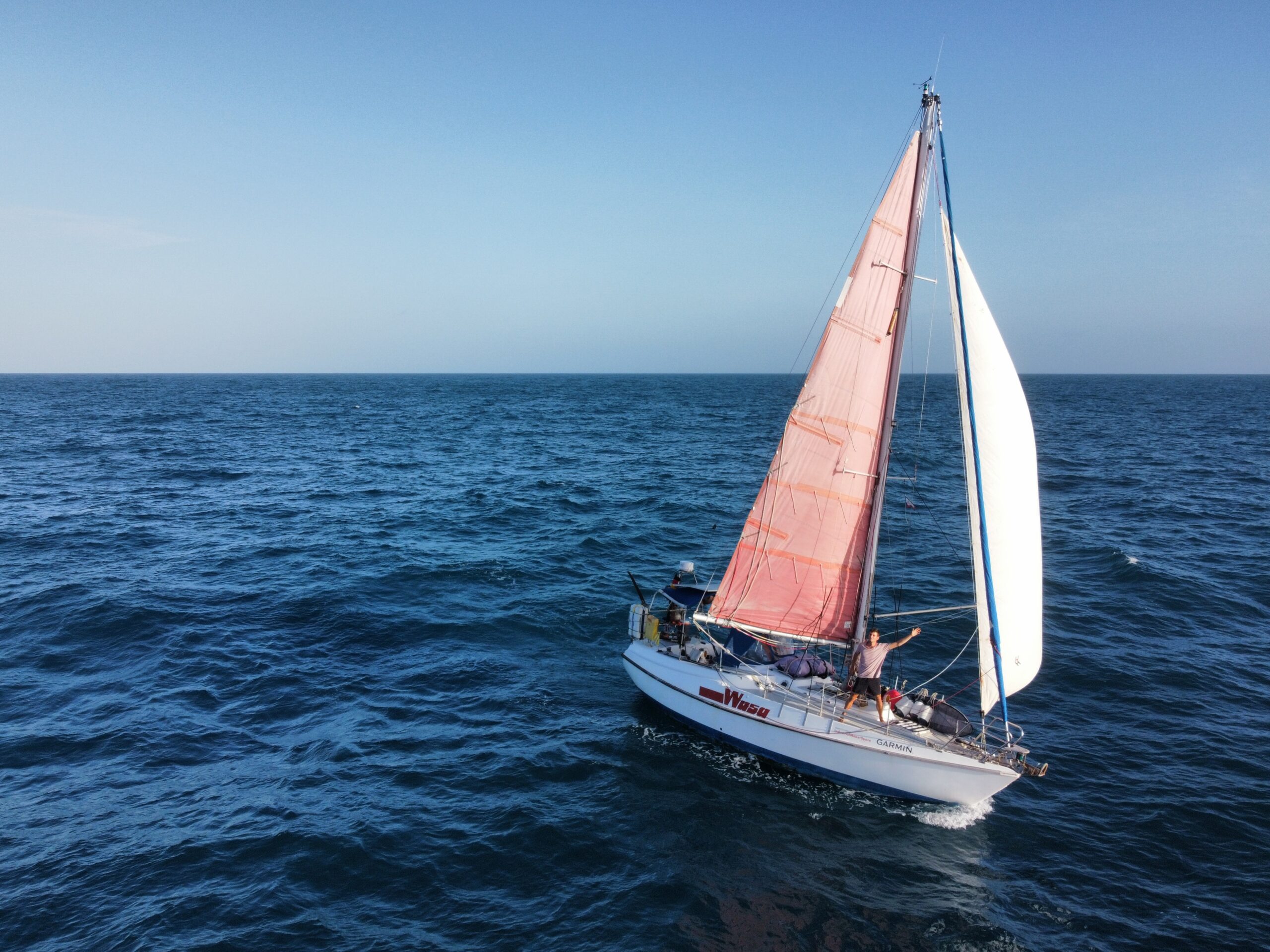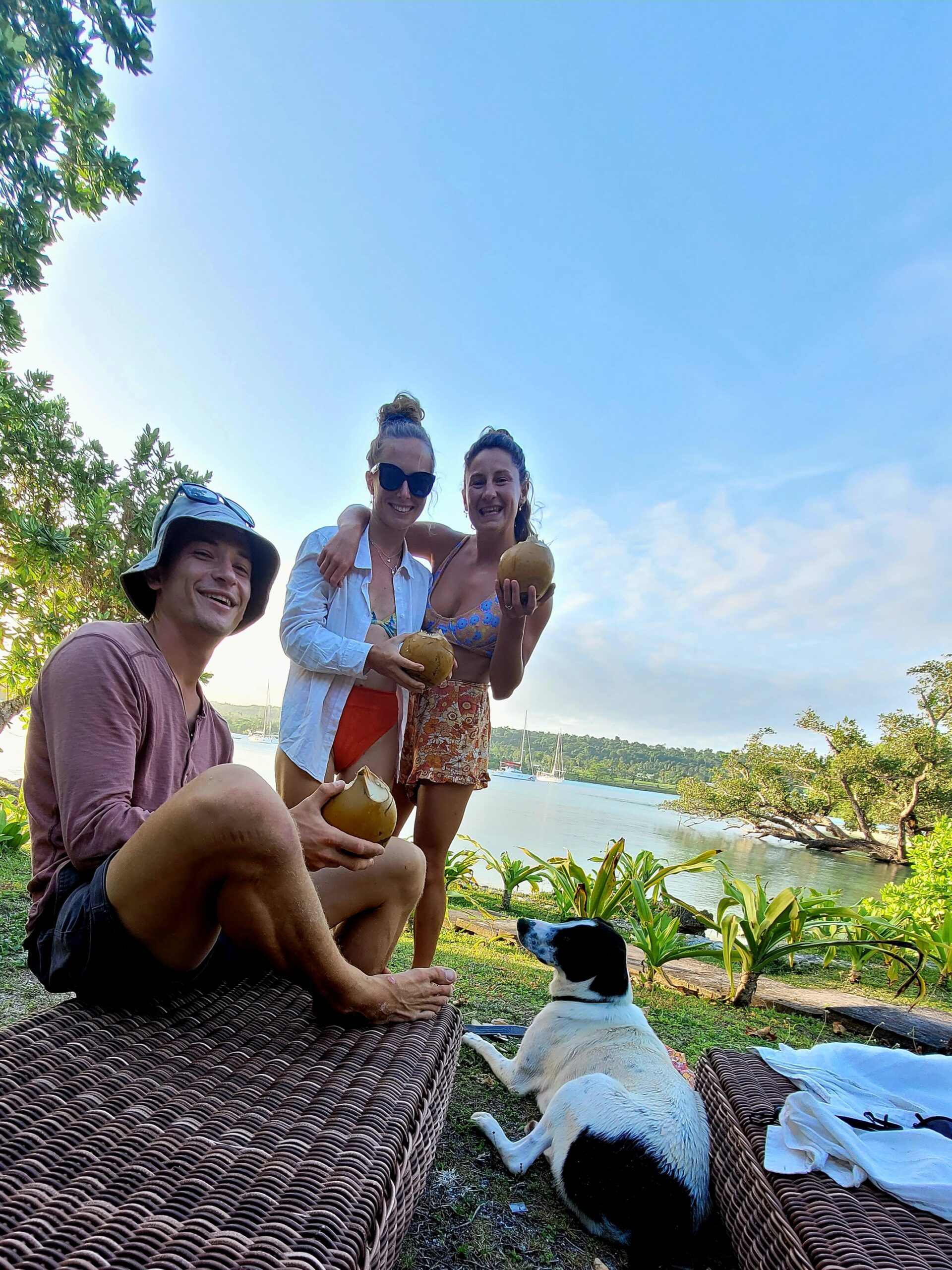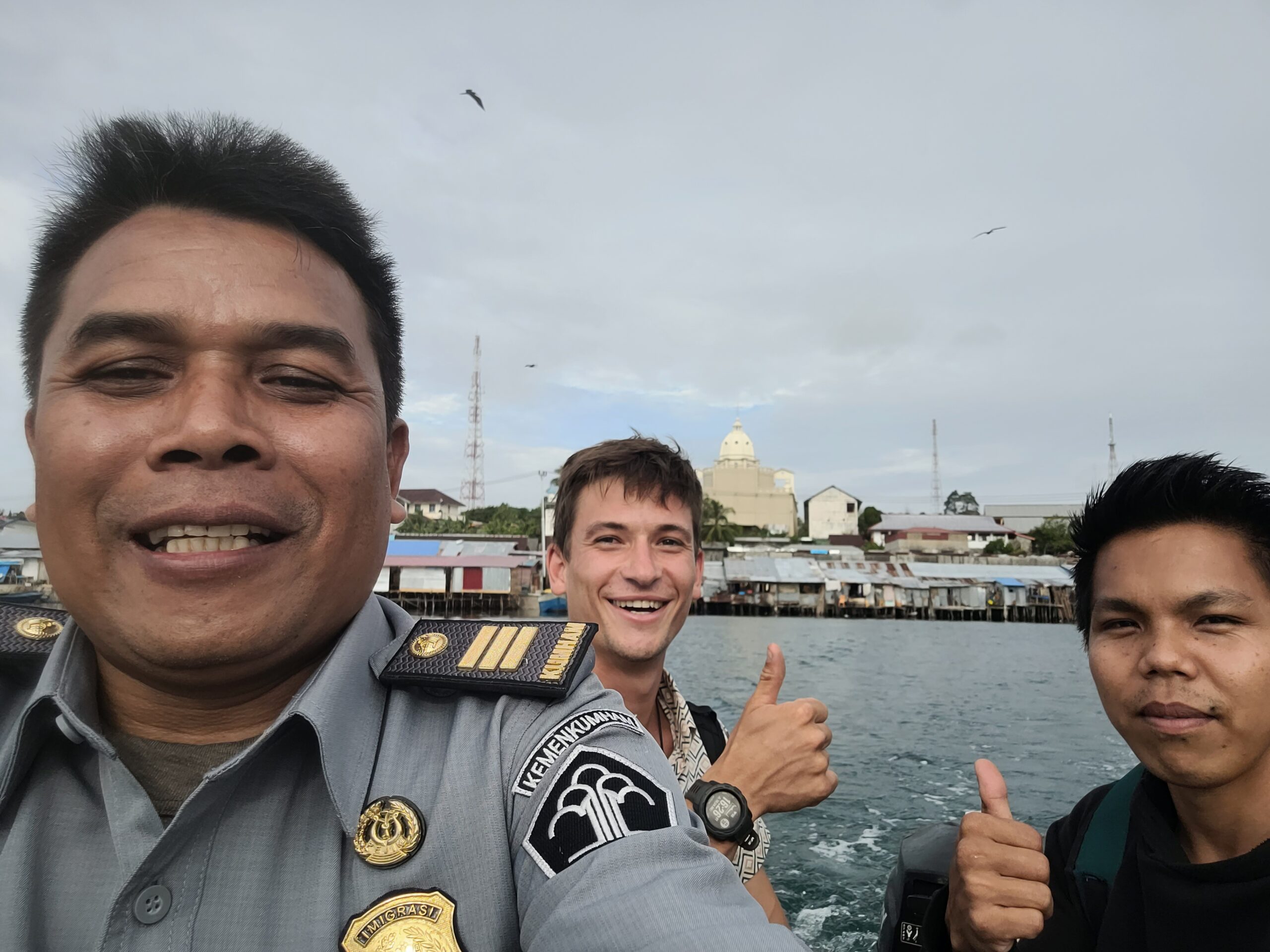
In September, I sailed single-handed from Vanuatu to Indonesia. My route took me through the Torres Strait, the narrow between Australia and Papua New Guinea, and was almost 2200 nautical miles long. This makes the crossing the longest I have ever sailed alone.
However, before I set sail, I spent three days with Sarah and Josie in a small bay south of Luganville. We had been working on our boats for days and Sarah’s and my birthday were coming up those days.
The perfect occasion to unwind, go snorkeling and sit together around the campfire. The girls invited me to a birthday breakfast on MANURIKI and even surprised me with a freshly baked birthday cake. – Yumm!


Unfortunately, I couldn’t postpone my departure forever. As hard as it was to say goodbye to this fantastic country and my new friends, I was already looking forward to the upcoming adventure. In contrast to my last single-handed trip, this time I felt a deep sense of calm and could hardly wait to leave the first miles behind me!

Once at sea though, it still took me quite a while to find my sea legs again. During the first four days at sea, I struggled a lot: I passed New Caledonia in the north, it was cold and the ocean swell came from different directions. As a result, the boat rolled back and forth, making everyday life on board a real challenge.
At night, I tried to keep an eye out every hour. But, given the fact that not a single boat was to be seen the whole time, that was far too much of a good thing.
Without being able to see them anywhere, I received a radio message from the French navy on the third day. They inquired about my whereabouts, asked for my crew and ship details and then wished me a safe journey. They would stay in the area for the next few days and if I would need any help, I should simply contact them on channel 16. – Good to know!
On the fourth day, I got seasick: despite all taken measures, I threw up in the evening and then just managed to prepare myself a „storm bed“ on the floor of the saloon. My eyes closed within seconds and I slept like dead until the next morning. – None of my alarm clocks managed to wake me up.
I probably really needed that sleep. The next morning, I was as good as new. I was hungry, well-rested and full of energy. – I got my sea legs back!
My course was more or less direction west and lead about 150 nautical miles south of and parallel to the coast of Papua New Guinea. The aim of the first leg was to reach Raine Island to start the passage through the Torres Strait from there.
Friends of mine had recommended that route and provided me with the correct GPS waypoints (from „Cruising the Coral Coast“ by Alan Lucas). But more on that later.
Until then, sailing was pretty easy. The wind was constant in direction and strength, so the windvane steering had an easy time keeping me on course. My track resembled that of a snake, but in average, I was heading in the right direction. – I hadn’t had to readjust the tiller or sail for four days in a row.

The only challenge was the increasing number of fishing boats. Although they were all visible on AIS, they were zig-zagging so much, that it was impossible to plan a way around them.
So, I usually held my course until we came right into sight and then tried to avoid passing AHEAD of the fishermen’s bow. It wasn’t always possible to tell whether they were dragging long nets and I wanted to avoid getting tangled up in them at all costs.
This journey is my dream! If you want to support me and keep the journey going, please feel free to invite me for a symbolic dinner!
Thank you so much!
But it wasn’t easy! The Chinese captains generally didn’t respond to any of my radio calls and even changed course by 90° to 180°, just being 300 meters off my bow.
Otherwise, I spent my time on small sewing and rigging projects. For example, I sewed a new cover for my machete, practiced a few splices and added nice rigs to all the ends of my lines. I also read books and watched „Californication“, an American series that I had saved on my hard drive. – Funfact: At some point, I noticed that I was no longer writing my logbook entries in German, but automatically switched to English.

A bucket shower was on the agenda every other day and I cooked two to three meals a day: There were fresh salads, soups, curries, stir-fry or pasta dishes. In addition, the golden rule was to eat at least one onion and one apple every day. My highlight, which I could always look forward to, was half a grapefruit in the morning, of which I had 12 in my stash.
After 12 days at sea, I finally approached the Great Barrier Reef and the entrance to the Raine Island Passage through the Torres Strait. I was excited!
The Torres Strait connects the Pacific Ocean with the Indian Ocean. At its narrowest point, Australia and Papua New Guinea are just 90 nautical miles apart and the few navigable channels are only ten to twenty meters deep. Not only sailors and large freighters squeeze through the straits, but also the tides flow through the bottleneck: in the Prince of Whales Channel, the narrowest point, tidal currents of around six knots are not uncommon at all!
The whole area is very shallow and dotted with reefs. Sailing at night was therefore not possible and it was essential for me to have a precise passage plan prepared: I had divided the approximately 150 nautical miles from the reef entrance at Raine Island to the end of the narrow fairway into three sections. One every day.


I timed my arrival at Raine Island Pass for sunrise and, with 25-30 knots of wind behind me, easily managed to cover the first 50 nautical miles to my first anchorage in daylight. In the late evening, I dropped my anchor behind one of the previously selected reefs and sought – unfortunately only semi-successfully – a good night’s sleep.
The game was repeated the next day: setting off at sunrise; fast sailing through turquoise waters; anchoring in the late afternoon; restless sleep.
I was now moored behind Harrington Reef and only 28 nautical miles away from the Prince of Whales Chanel. I studied the tide atlas one last time, made a few small changes to my timing and set the alarm for four in the morning.

At a rising tide, the water flows north along the coast and west through the Prince of Wales Chanel. At a falling tide, the direction is reversed. High tide was forecast for that day around midday and so after my early departure, pushed by the current, I headed north at seven to nine knots!
Around nine o’clock Wednesday, Thursday and Hammilton Island flew past my left and at 11:40 I noted in the logbook: „I’ve left the Prince of Wales Channel!“
It was done! – That easy! The preparations and getting up early had paid off! Nevertheless, now I was dog-tired and when the upcoming counter-current slowed my speed down to two to three knots, I took the opportunity to cook once again and then go to sleep.
There were no fishermen to be expected here yet – a freighter had confirmed this to me over the radio. I had activated the course deviation alarm on my chart plotter and the large vessels were drawing attention to themselves via the AIS anyway.
Seven days were still laying ahead of me. The wind had dropped noticeably in the new ocean and the swell was also very moderate despite the shallow water (60m).
Only the number of fishing boats increased from day to day: The Arafura Sea is incredibly rich in fish (still?!) and in contrast to Australia, Papua New Guinea and Indonesia have no, or only very limited, fishing restrictions.
Thousands and thousands of fishermen are anchored here and have their lines in use non stopp! In my last two days before arrival, I unsuspectingly sailed through an increasingly dense collection of fishermen, until at some point there were so many of them, that the backdrop of lights at night was indistinguishable from a big city.

At some point I even got used to the fact that I could hear the voices of the crew on board as we sailed past. -Sleep was out of the question! Only sometimes, when I had just passed one of the boats, did I set myself a five-minute timer, kneeled on the cockpit bench and let my head sink into my lap.
I reached Tual, my destination on the Kai Islands, on September 30th. I spent around 20 days at sea and covered 2195 nautical miles!
The clearance procedure took two days, but even without an agent it worked without any major problems! First biosecurity, then immigration, on to customs and finally to the harbor master. In every office, after a little icebreaker; „Selemat Pagi! Saya Paul dari Jerman dan saya ingin menyatakan.“, I found at least one person who understood some English and was keen to help me. Even the subsequent boat searches were accompanied by lots of laughter and even more selfies.
Selemat Datang!


